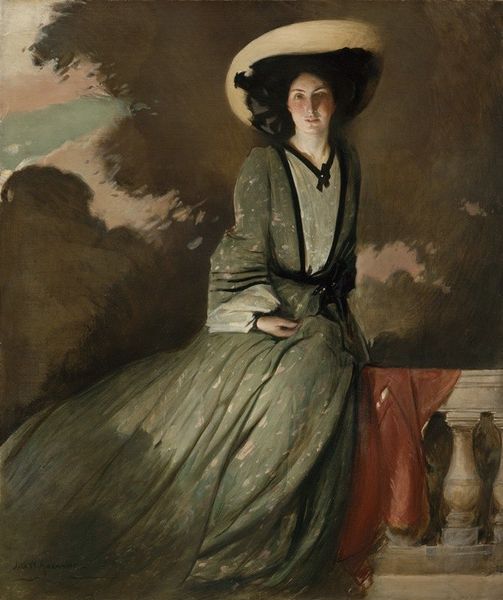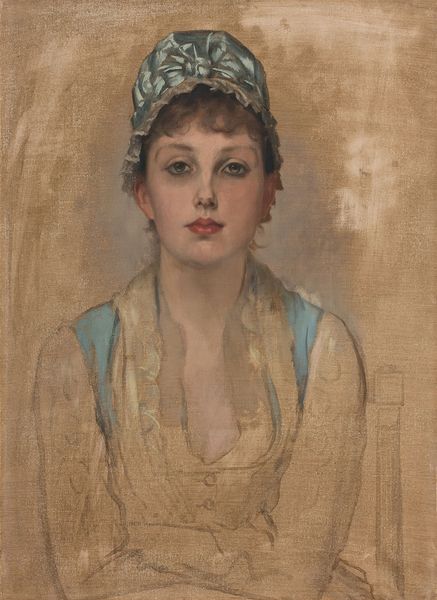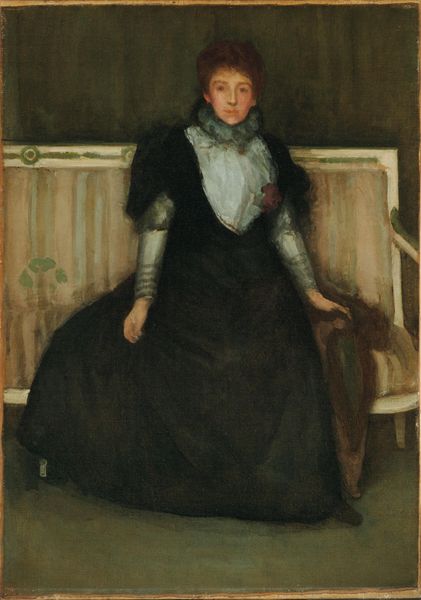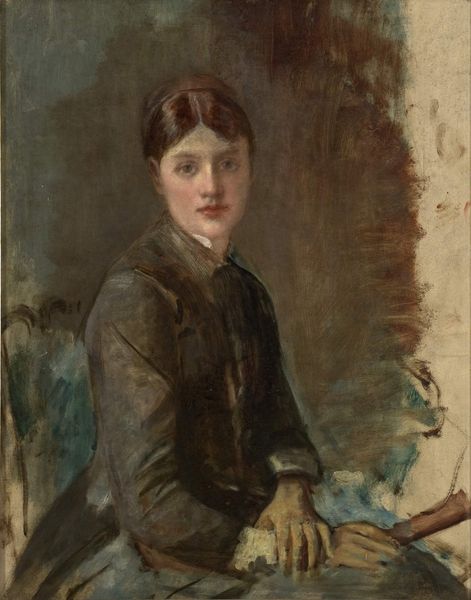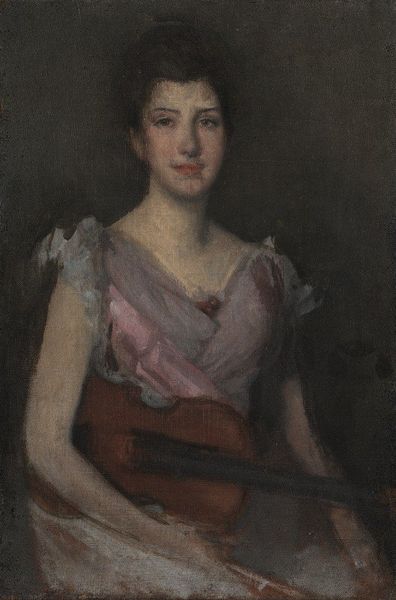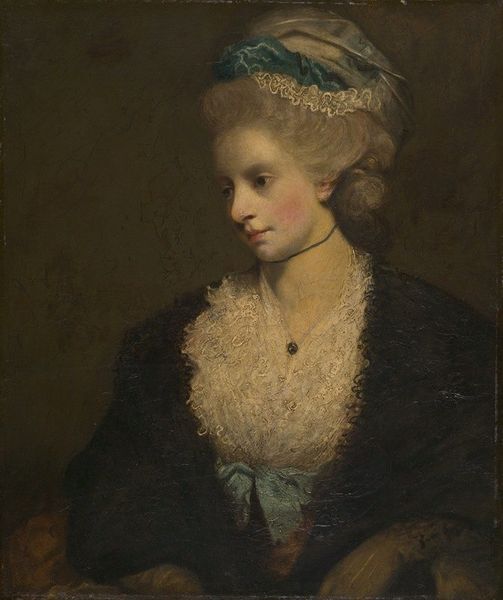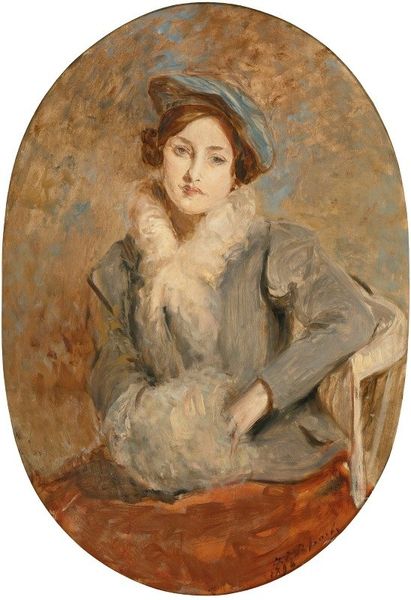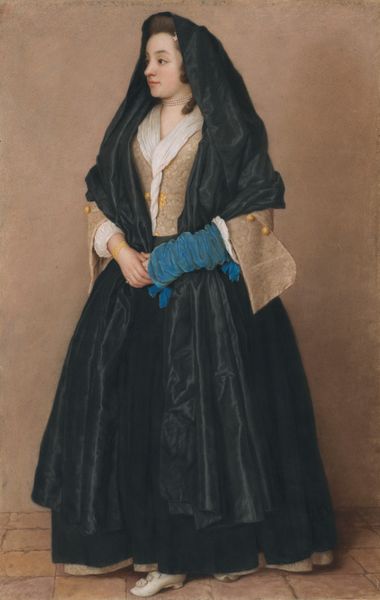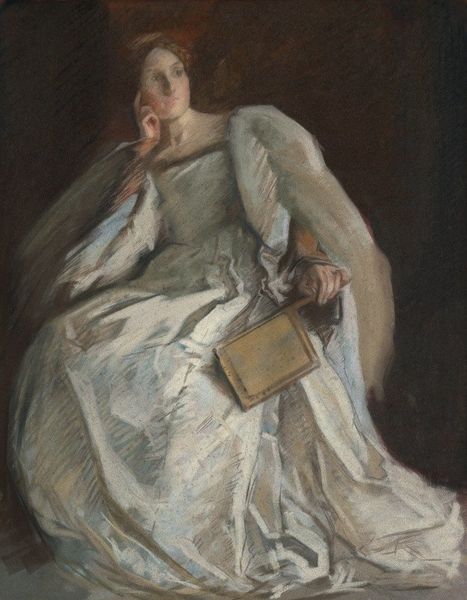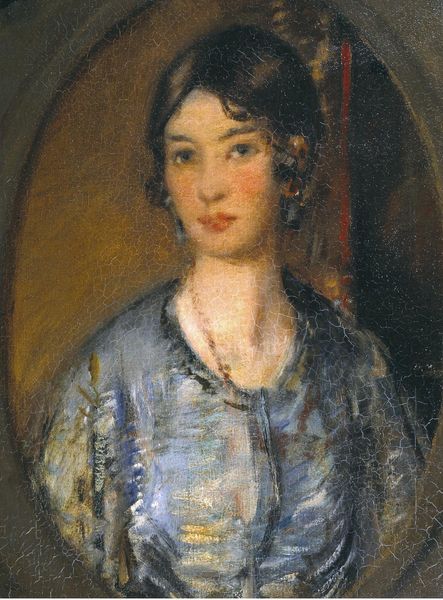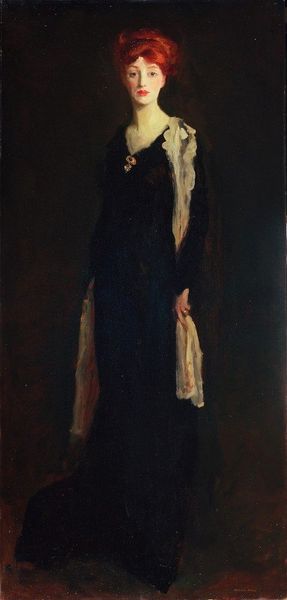
#
figurative
#
portrait reference
#
acrylic on canvas
#
portrait head and shoulder
#
animal drawing portrait
#
portrait drawing
#
facial portrait
#
portrait art
#
fine art portrait
#
celebrity portrait
#
digital portrait
Copyright: Public Domain: Artvee
Editor: This is George Bellows' "Maud Murray Dale" from 1919, rendered with acrylic on canvas. The subdued palette and the subject's formal pose create a somewhat somber mood. What strikes you when you look at this portrait? Curator: I see a carefully constructed image intended for public consumption. Consider the historical context: this was painted just after the First World War. How did artists respond to this period? Bellows seems to be portraying not just an individual, but also the societal aspirations of the era through controlled presentation. Editor: Interesting! So, the painting isn’t necessarily about Maud Dale, but about the ideals society wanted to project? Curator: Precisely. Notice the emphasis on her poise, dress and contained emotion. The hat, for example, it speaks to an era when social presentation and outward appearance were more consciously controlled. It highlights the values a portion of society deemed admirable and respectable. In what settings and through what channels would this image circulate, influencing public perception? Editor: I never considered that! So, it’s less about Bellows’ personal take, and more about the cultural narratives the artwork reinforced. This makes me rethink all the portraits in this period, it gives the artist a lot more public responsibilities than I had previously considered! Curator: Exactly! The politics of imagery is so important. We must always ask: Whose values are being promoted and whose are being suppressed? This reflection challenges us to consider who controlled such narratives then and how such processes unfold even now. Editor: It's fascinating to analyze art in this way, broadening our lens to include all societal considerations when dissecting any one artwork. Curator: Absolutely, the intersection of art and social context allows for a deeper appreciation.
Comments
No comments
Be the first to comment and join the conversation on the ultimate creative platform.
